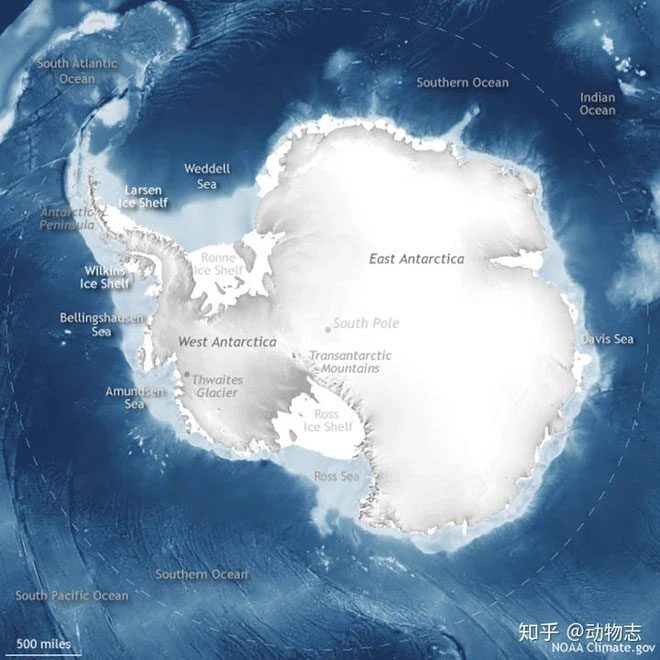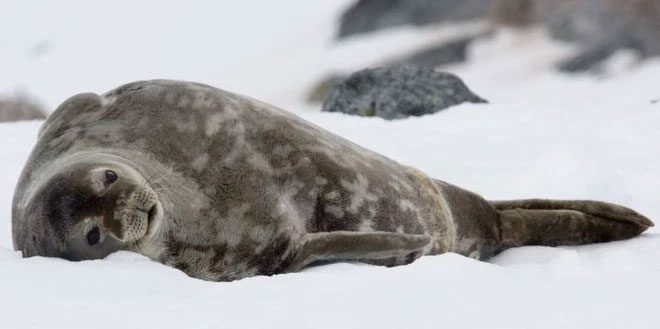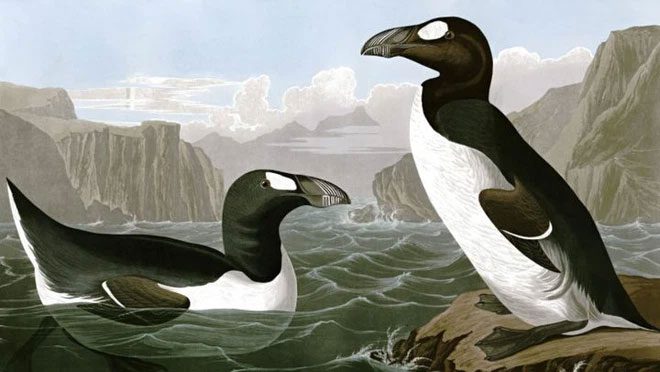Many people have cited the differences between the Antarctic and the Arctic to argue that polar bears are not suited to the environmental conditions of Antarctica. However, this logic is flawed. Whether a region is suitable for polar bears primarily depends on whether it can meet their needs, regardless of how similar it is to the Arctic.
Polar bears (Ursus maritimus) are typically found around the Arctic Circle in Alaska, Canada, Greenland, Norway, Russia, and Iceland. The fur of polar bears is particularly well adapted to areas where temperatures can drop below -30 degrees Celsius. These animals spend most of their time living on ice, feasting on fat-rich seals, which provide them with enough energy for long periods between meals.
Antarctica also has sea ice, low temperatures, and seals, yet it is completely devoid of polar bears.
Most polar bears live in the Northern Hemisphere, according to Andrew Derocher, a biology professor at the University of Alberta (Canada) and a polar bear researcher for nearly 40 years. Apart from the Andean short-faced bear (Tremarctos ornatus) of South America, bears are only found in the Northern Hemisphere.
What Do Polar Bears Need?
First, they need sea ice. Since polar bears hunt seals on drifting ice, they cannot catch seals without floating ice, as even if they swim, they are certainly not as adept in the water as seals.
 Without floating ice, polar bears cannot hunt seals.
Without floating ice, polar bears cannot hunt seals.
Next, they require ice floes. If the seawater freezes completely, seals will suffocate to death because they cannot find a place to surface for air. Polar bears prefer a marine environment that is partially frozen and has ice floes, as they can “wait in ambush” near the ice floes. Additionally, seals need to access the water’s surface to breathe, and their breeding must also take place on ice.
Do polar bears need land? The answer is not necessarily. Polar bears are not aquatic animals, so they do need to come ashore, but for them, the shore is not land; rather, it is sea ice.
In some areas, female bears will den on land when they are pregnant, but primarily, in other areas, such as the Beaufort Sea region, female polar bears will dig dens and give birth on ice floes, indicating that they can grow and thrive without needing solid land.
Moreover, in some ocean areas near Antarctica, there are many drifting icebergs that can fully meet the basic needs of polar bears, which means polar bears could potentially live in part of Antarctica.

Polar bears could potentially live in part of Antarctica.
What Problems Would Polar Bears Face in Antarctica?
While polar bears could survive in Antarctica, Antarctica has two characteristics that are entirely different from the Arctic, which would still impact the lives of polar bears.
First is the position of land and sea. The Arctic is a continent surrounded by ocean, while Antarctica is an ocean surrounding a continent. The polar bear’s habitat would be entirely sea ice. Their distribution in the Arctic can extend to the vicinity of the North Pole and up to 88 degrees North latitude. Upon reaching Antarctica, this species would not be able to survive in the interior of Antarctica (in fact, no vertebrate animals exist in the Antarctic interior), thus they can only live in the coastal areas of Antarctica.
However, this does not significantly affect polar bears. Currently, polar bears mainly operate near the Arctic Circle in the Arctic, and they become rarer as they move northward. Due to the scarcity of food in high-latitude seas, which freeze year-round, their hunting is also quite challenging.

Temperatures in Antarctica are lower than in the Arctic.
Second is the temperature. Temperatures in Antarctica are lower than in the Arctic, and there are no warm ocean currents surrounding Antarctica, making it colder. Therefore, polar bears could live at lower latitudes in Antarctica, where there is sea ice, polar bears could potentially inhabit. The lowest latitude for polar bears in the Arctic is about 52 degrees North (Hudson Bay).
If they were in Antarctica, they could live at lower latitudes. However, one issue this raises is that the Arctic seas are surrounded by continents, and polar bears can come ashore on the sea ice in summer; while there are no continents surrounding the Antarctic seas (only a few small islands), polar bears may only move to higher latitudes as the sea ice melts. This will be a significant factor limiting the development of polar bear populations in Antarctica.
However, at this moment, while polar bears are gradually losing their habitat, and they could exist in Antarctica, there are still no individuals or projects in place to migrate polar bears for their protection.

If polar bears lived in Antarctica, they would disrupt the ecological balance.
What is the Real Issue?
The real issue of polar bears entering Antarctica is not that polar bears themselves cannot survive there, but rather the disruption of the ecological balance. Marine mammals in the Arctic seas have adapted to the presence of polar bears, and their behaviors have evolved to avoid being hunted by them. For example, ringed seals, a primary food source for polar bears, seek out hidden dens when giving birth, and they frequently erase their tracks on the ice surface to avoid predators.

Weddell seal.
However, the Weddell seal in Antarctica is the opposite; its natural enemies are all underwater, and it has become accustomed to living without any natural predators on the ice.
It nests and breeds right on the shore without any cover on the ice surface, and they do not pay attention to animals moving on the ice surface, allowing humans to approach their dens directly.
It is easy to imagine that if polar bears invaded Antarctica, the consequences of the Weddell seals’ lack of vigilance would be catastrophic. Another creature is the penguin. Penguins come ashore to lay eggs and have a fixed nesting area, which is also where polar bears could thrive. Therefore, the devastation of the ecosystem caused by polar bears living in Antarctica is evident.
Historically, the great auk, known as the “Arctic penguin”, suffered the impacts of polar bears. Especially after the 15th century, when the Earth entered a little ice age, polar bears expanded their range southward. Although the primary cause of the great auk’s extinction was indiscriminate hunting by humans, some experts believe that polar bears also played a role in this extinction.

Antarctic penguin.
Thus, even though polar bears could survive in Antarctica, they would disrupt the ecological balance, and the continued survival of the species over time would be meaningless.
The Antarctic environment would be a sumptuous feast for polar bears. This is also why they should not be introduced to this area. The voracious appetite of polar bears and the local animals’ lack of vigilance against large land predators could lead to ecological collapse. Therefore, it is perhaps best that these large white bears remain in the north.





















































